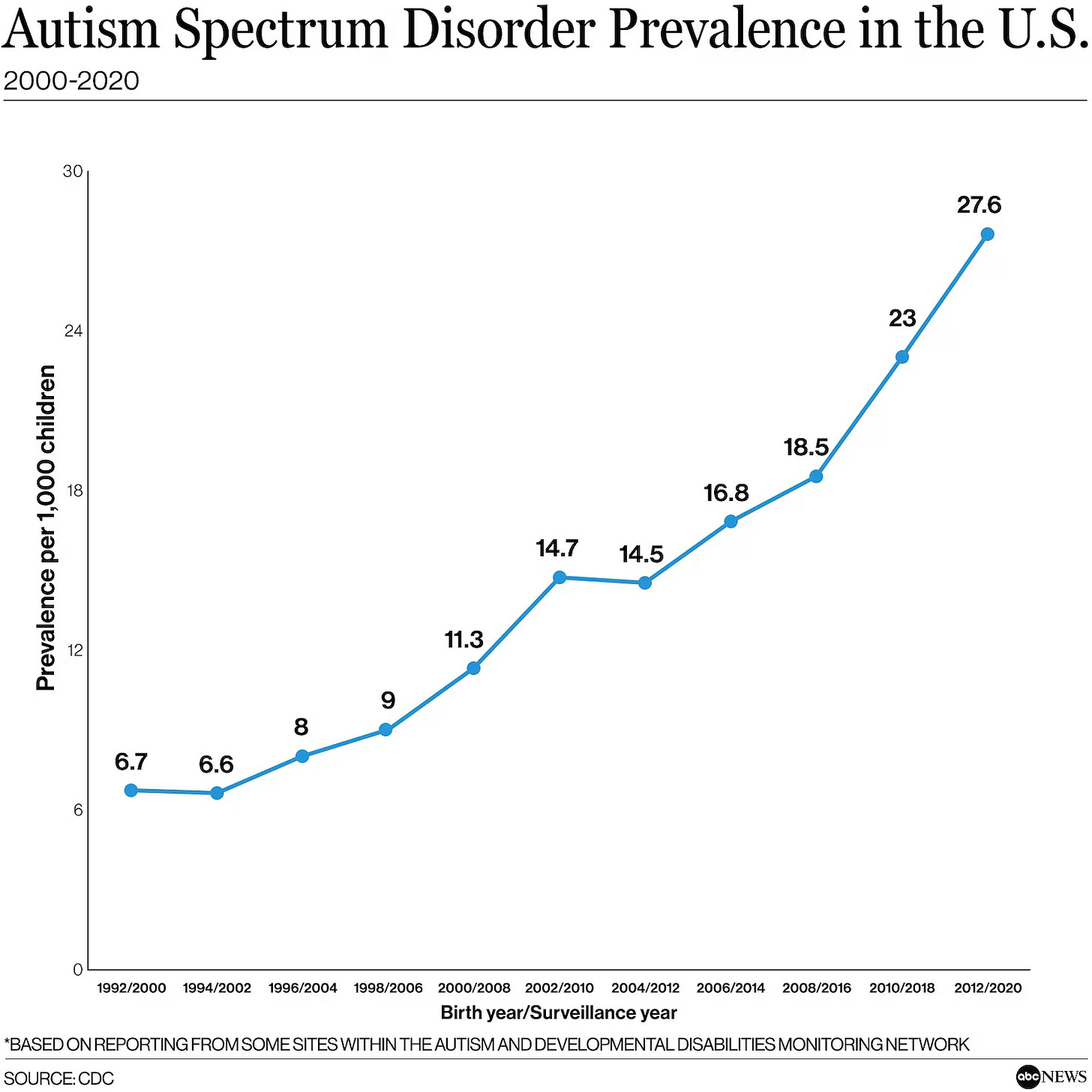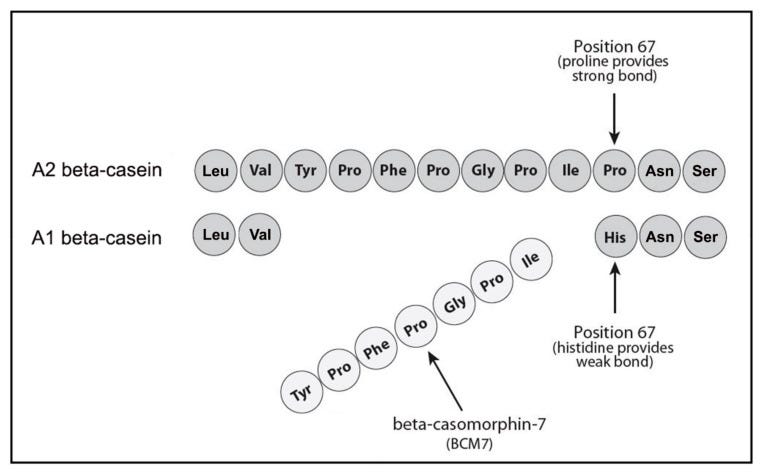Ever ask yourself why are there so many people with autism these days? The autism numbers are skyrocketing and the latest I’ve heard is 1 out of 36 people are diagnosed with autism. Why? Even RFK, Jr asked this question last week.
He questioned vaccines and the autism connection, I’m not debating that in my post but rather another facet that could be a means for the vaccines to enter the equation…but not yet. First let’s look closer at a more diabolical pathway. One so innocent we would never suspect it.
Don’t you just love a snack of cookies and milk? Great for an after school snack for the kids, right? I think you may rethink that once you learn why we love it so much…it’s the morphine we get when we indulge in either conventional dairy or something made with wheat. It’s in the proteins, a sneaky little dose of morphine.
Casomorphins found In cheese and dairy can cross the blood-brain barrier and attach to dopamine receptors in your brain. This causes your brain to release dopamine, a neurotransmitter related to feelings of pleasure and reward. Some researchers believe this occurs as a way to ensure babies (humans, cows, etc.) continue to nurse during infancy, which helps the survival of the species.
Dr. Hagmeyer - The Food Opiodes: Casomorphins and Gluteomorphins and Mental Health, December 25, 2024
Why is all of this so important? The gut-brain axis is the link to our food and our lifelong mental and physical health. What we eat makes a BIG difference to our overall health and why chronic disease and mental health are at an all time crisis in our country.
What’s the Answer?
Conventional dairy is comprised of cows that are genetically A1 cows. But there are two types of dairy cows, A1 or A2 or a combination of the A1 and A2. The A1 cows have a higher milk production and are favored by the dairy industry. But this higher volume has a cost.
The protein in milk is casein and is comprised of a chain of amino acids that make up casein. In A1 cows this amino acid sequence forms what is known as a beta casein morphine-7 (BCM-7) during digestion. A2 milk creates beta casein morphine-9 (BCM-9).
This BCM-7 has a weak bond and is easily broken which causes inflammation in the brain because it can cross the blood brain barrier.
Bovine beta-casein is categorized into two broad types, these being A1 and A2, with the A1-type being fundamental to the release of bBCM7 (Figure 1).
Could this be a cause of autism? This study seem to point to this conclusion, Blood–brain barrier and intestinal epithelial barrier alterations in autism spectrum disorders and it merits further investigation.
These cows were mostly from Northern European areas. But wait…all is not lost! There are some cows that are from more southern areas, breeds such as Guernsey that are genetically an A2 type cow. The milk in the A2 cows do not make the same BCM-7, instead they make BCM-9 and cause less digestive upset and do not have the morphine effects on the brain. These were the cows typically on the family farm and still found on Amish farms that provided a richer, creamier milk to make butter and cheese for the family and didn’t need for a high producer like that in a dairy operation.
What is A2 Milk?
Since we’re talking genetics we have to discuss that every cow has two genes, one from each parent. Some cows could have one A1 parent and one A2 parent and their milk would be designated as A1/A2 milk. These cows and pure A1/A1 cows make up the majority of conventional dairy and is problematic for many in the population, myself included. The only milk anyone really should be drinking is from an A2/A2 cow, or human milk. Other animals such as goat, sheep, and camels have A2/A2 milk and is why a baby who fails to thrive on regular formula is often given goat’s milk instead.
Both dairy casomorphins and gluten peptides are largely specific to modern diets. This is because neither dairy nor cereals were of dietary importance prior to the gradual emergence of agricultural and animal domestication activities. This began to occur approximately 10,000 years ago within Neolithic communities in the Fertile Crescent of West Asia. In many parts of the world, dairy plus wheat and other gluten-producing cereals from the Triticeae have only become important dietary components in the most recent centuries. Further, there is evidence of considerably lower levels of gluten peptides in early strains of wheat compared to modern wheat varieties [7] and also in durum varieties used in pasta compared to bread-making varieties [8]. -- Casomorphins and Gliadorphins Have Diverse Systemic Effects Spanning Gut, Brain and Internal Organs
Wheat
There is also a similar situation with wheat and it’s protein, gliadin. Modern wheat has been bred to have increased gliadin in an effort to make it more pest resistant. This increased protein content is also increasing the morphine dosage we get with conventional modern wheat. This is why so many people are able to eat an ancient grain that has not been modified genetically. This gliadin morphine component acts in a similar fashion in the body causing delayed GI emptying which slows motility in some and in others, the opposite is true.
Gliadin and glutenin are not assimilable as they are (the peptides that compose them are composed of many amino-acids that form long chains) from the intestine; the hydrolysis (fragmentation) of peptides in single amino-acids or very small fragments (less than 9 amino-acids) is, therefore, fundamental for being able to cross the intestinal epithelium; the larger fractions, in general, are eliminated with feces. Another factor that affects the digestibility of these proteins is the type of constituent amino-acids: the high content of proline and glutamine makes these proteins resistant to complete digestion in the small intestine.
What difference does this all make in the great scheme of things? According to Dr. Hagmeyer this makes a big difference when it comes to mental health. The Food Opiodes: Casomorphins and Gluteomorphins and Mental Health could be the key to resolving anxiety, depression, confusion, migraines, nervousness and mood swings that are so common, unfortunately, these days.
Naturally the body produces digestive enzymes that break these proteins down into manageable parts for a healthy digestive system and health. However, some individuals have antibodies to this enzyme which creates problems. Others may have some but not enough of this enzyme to handle a diet high in carbohydrates and dairy.
Gluteomorphin Antibodies
According to this study, Casomorphins and Gliadorphins Have Diverse Systemic Effects Spanning Gut, Brain and Internal Organs, bBCM7 is normally broken down from the N-terminus, with the key requirement being the enzyme dipeptidyl peptidase-4 (DPP4) [23].
The biosynthesis of human DPP4 within the brush-border of the gut system, combined with bacterial DPP4 linked to the presence of particular bacteria within the microbiome, together with ability to upregulate DPP4 within the sera and other organs, are all likely to be of fundamental importance. When the microbiome is considered an ecological system, which itself is encompassed within a broader human system spanning the gut, brain, and internal organs with which it interacts, then a key question is what are the externally sourced causal modulators and disruptors of that system? It is in that context that more attention needs to be given to the food-derived opioids.
There is increasing evidence that some microbiota have bacterial equivalents to human DPP4 [44,122], and this may include yogurt bacteria [123], with this creating the potential for attenuation of opioid peptides passing from the intestines to the circulatory system in individuals with a compromised intestinal barrier.
- Casomorphins and Gliadorphins Have Diverse Systemic Effects Spanning Gut, Brain and Internal Organs
These Gluteomorphin Antibodies Appear
Autism
Celiac Disease
non-Celiac Gluten Sensitivity
PANDAS
According to the study, Findings in normal rats following administration of gliadorphin-7 (GD-7), it is well established [1], [6], [7], [8] that the exorphins (βC-7 and GD-7) are found in high concentration in the blood and urine of patients suffering from autism and schizophrenia and it has also been found in CSF of a woman with postpartum depression [4]. Removal of these exorphins by diet and dialysis [1] or diet alone [1], [3], [8] is followed by striking improvement in manifestations of the disorders.
Immune response to dietary proteins, gliadin and cerebellar peptides in children with autism
Opiates are recognized as some of the most powerfully addictive drugs out there, so it’s no surprise that those suffering from circulating casomorphin or gluteomorphin would struggle with strong cravings for products containing gluten and casein. But it’s much bigger than just a craving. These foods can cause serious problems in people who have problems with producing DPP-IV or have antibodies against casomorphins and gluteomorphins.
— Dr. Hagmeyer, The Food Opiodes: Casomorphins and Gluteomorphins and Mental Health, December 25, 2024
Diabetic Medications Casomorphins and Gluteomorphins
Medications for Type 2 Diabetes including Gliptins (Januvia, saxagliptin, and vildagliptin) are (DPP-IV) dipeptidyl peptidase-4 inhibitors. They work by increasing insulin and lowering glucagon.
These medications may seem great to control blood sugar issues encountered with patients with Type 2 Diabetes but not being able to break these down means more of these casomorphins and gluteomorphins are circulating in the body. They are now multiple studies reporting the Connection between Gluten and autism and schizophrenia.
In closing I share another quote from Dr. Hagmeyer on the subject
In the next several years, more and more doctors will become familiar with these two terms. Unfortunately, even most doctors have no idea what these substances are and how much they can affect a person. How can something that plays such a vital role in the lives of the multitudes, contributing to autistic symptoms, food addiction, clinical depression, chronic fatigue, caffeine addiction, highway deaths, and more go without being learned and kept in the forefront of the minds of all doctors? Something to consider?
—Dr. Hagmeyer, The Food Opiodes: Casomorphins and Gluteomorphins and Mental Health, December 25, 2024
What Does the Future Hold?
Specific strategies for reducing exposure to bBCM7 and GD7 are two-fold. Bovine BCM7 is relatively easy to remove from the food-system by producing cows that produce A2 rather than A1 beta-casein or alternatively placing more emphasis on milks from other species such as sheep and goats, plus an emphasis on human milk for babies. Removing GD7 from the diet is more difficult because currently it requires removing gluten and hence all cereals containing gluten from the diet. However, technical solutions such as genetic manipulation to alter one or two amino acids within the GD7 sequence may in the future become practical. - Casomorphins and Gliadorphins Have Diverse Systemic Effects Spanning Gut, Brain and Internal Organs








